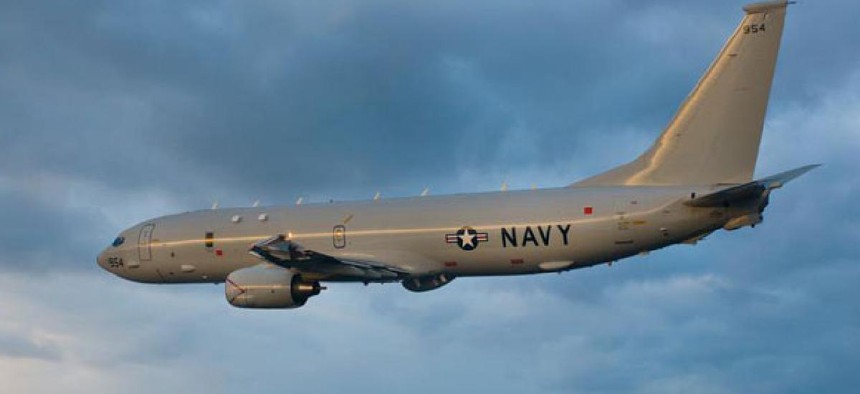System bugs in Navy’s $34 billion P-8 aircraft degrade performance

United States Navy
Pentagon tester identifies flaws in radar, electronic warfare and communications systems.
The Navy’s new P-8 anti-submarine warfare and maritime surveillance aircraft under development suffers from a variety of radar and communications systems problems that could seriously degrade operational effectiveness, the Pentagon’s operational test organization reported to Congress yesterday.
Developmental test results revealed that the P-8 has image quality problems with its synthetic aperture radar used to track surface targets. Also, its electronic warfare system does not reliably collect and identify signals from hostile radars, the report said.
The P-8’s common data link has deficiencies that prevent reliable transmission of radar and infrared imagery intelligence to operational users. Additionally, ineffective voice satellite communications systems “prevent transmission and receipt of mission critical information,” the report said.
Boeing has a contract to develop the P-8 based on its commercial 737 twin-jet aircraft. The Navy plans to buy 122 of them at an estimated cost of $34 billion.
The Navy plans to use a tracking system on the aircraft to search for and locate enemy submarines. The system, known as the Multi-static Active Coherent System, is under development by Lockheed Martin Corp. But the service has deferred its installation until at least 2014 due to problems identified in tests, the report said.
The P-8 drops sonobuoys on the surface of the ocean to locate submarines by listening for acoustic signatures. Information collected by the buoys is then transmitted to the aircraft. A separate section of the test report revealed that onboard software designed to determine the geographic position of the buoys could not accurately do so, the report disclosed.
The test report also revealed that a drone system designed to work in conjunction with the P-8, the Northrop Grumman MQ 4-C, experienced stability problems with its flight control software, which caused a “significant test schedule delay” from May 2012 to at least this month. The Navy plans to buy 65 MQ-4Cs equipped with radar and electro-optical systems to track maritime targets at a cost of $9 billion.






